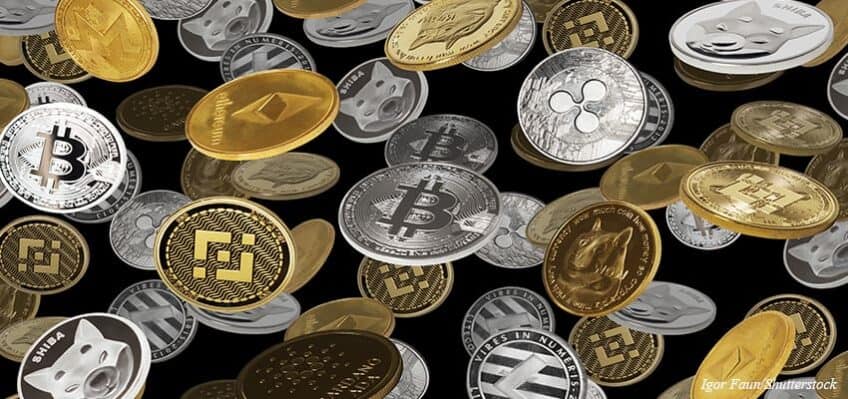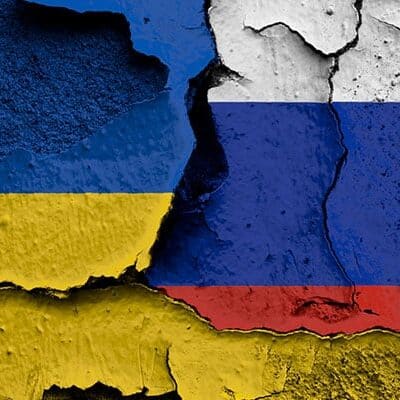Cryptocurrency. You hear about it on the news all the time. Some people love it –– others seem to hate it. But, in reality, most people know very little of just what exactly cyrptocurrencies are. And, if we are honest, any discussion of “crypto” runs the risk of getting very, very complicated if not approached with a certain level of discipline.
But, fear is for yellow-bellies! Onward we go!
To understand cryptocurrencies, we need to discuss three very important areas: Economic Theory of Value, Cryptology and Proof of Work, and finally Transparency and Consensus. We do not aim to build a vast network of understanding in these areas in this presentation. Instead, we will open the doors to these basic concepts. If you wish to dig deeper, you are most welcome and invited to do so.
Our first stop requires us to look at what exactly is a currency (money).
Understand, if we were to put one-hundred economists in a room and ask them to define value, we would probably get one-hundred and ten answers! Economics often borders more closely to philosophy than science. But, for our purposes, we are going to put one basic theory out, and will build our discussion on it.
The value of any currency can be expressed by the labor required to acquire it.
Gold is considered valuable because it is rare. To find it, you have to pan river sand or dig mines. You have to really work at getting it. It requires labor. The labor is the primary source of its value.
Likewise, a farmer plants corn. It grows; it makes ears of new corn. The farmer harvests the corn. Again, the labor is a primary source of value for the corn.
No matter what goods or services are being produced, labor is always a determining factor in the value of the good or service.
With this in mind, currencies become placeholders, or better yet, storage methods, for holding the value of labor apart from the actual work being done.
If I work for an hour cleaning a floor, but the person that hired me to work for them has nothing of value that I can barter for in exchange for my labor, my labor might otherwise be lost. But, if a society agrees that labor can be stored for future exchange by holding on to a currency, my labor is not lost. I will use it later, maybe to buy food or make use of a utility.
Beyond that, it is left to the worker and the consumer to define the value of labor and the value of the goods and services being offered. And, that is WAY beyond the scope of this article.
Instead, we want to take one thought with us from this part of our discussion: To have value, a currency must be connected to labor in some way.
Part two of our road map leads us into exploring the field of cryptography. Again, there are lots of definitions for this, but we are going to craft them down into one easy-to-apply guide:
Cryptography is the practice of encoding and decoding data so that authorized people can access the data while those not authorized are blocked from having that same access.
Back in the long, long time ago, folks would encrypt their financial information using tools like the ink pen and the checkbook. These documents would be secured by things like strongboxes or safes, with keys or combination locks. While these methods were extremely safe, access times were not measured in milliseconds, but often in hours, days –– sometimes even longer!
Thanks to the Internet, things move a great deal faster. And, security methods have been developed to move equally fast.
There are dozens of known, and likely hundreds of hidden methods for encrypting financial data. Those methods are, again, beyond the scope of this discussion. Just understand that cryptocurrencies will always possess cryptography systems.
So, we have a currency, and it is (as best we can make it) secure to store our labors. But, wait a second –– how do we put labor into a cryptocurrency?
Same song, tenth verse: lots of ways. But, for this study, we are going to look specifically at how Bitcoin did it.
First, do you remember from school what “prime numbers” are? Prime numbers are any whole number that can only be evenly divided by one and itself (no remainders). Three is prime, because it can be divided by three one time, and by one three times. Anything else would leave a remainder from the division.
So what? Anyone can find a prime number, right?
True. If I asked you to figure out if eighty-six was prime, you could do that in less that a minute. No biggie.
But, if I asked you to figure out if this number was prime:
78574940568665684938256232446587736345554678698746451
That will take a lot of time. That will take a lot of…LABOR!
Bitcoins are based on the concept of “Proof of Work,” such as finding very large prime numbers. Checking those huge numbers takes human time. It takes computer time. It takes electricity. All these things are labor. Labor now is attached to the Bitcoin currency. And, with that, now it is left to economic forces to determine the value of that labor, and therefore the value of the Bitcoin.
But, that wacky big number I typed in above is of an unknown status. Is it prime and therefore worth a LOT of money as a Bitcoin? If I just say it is, what is there to keep me honest, to correct for potential mistakes and such?
Here is where we enter that final section, Consensus and Transparency.
When a number is claimed to be a prime, that claim is published to the Internet. At that point, other computers on the net will start checking to see if the claim is valid. As more computers send back their, “Yes, I checked it for this number as a divisor, and it checked out good!” a consensus if formed. When a certain level of consensus is achieved, the positive result is published. A Bitcoin is born! The finder gets the new Bitcoin.
In some other types of cryptocurrencies, just participating in the check earns you a small piece of the new coin. Lots of ways, lots of currencies.
The point to take with us here is that nothing happens without a consensus. Every action, from discovery to use to each transaction, is published so everybody can see the actions, and those actions are agreed upon. And, the way those things are announced, tracked and observed is by using what is called a Blockchain.
Think of the blockchain as an electronic version of the old checkbook. Every deposit, every check, every fee gets written down in the ledger of the checkbook. This way, you can balance your account at anytime, and know exactly what is where with your money.
Like the ledger, if someone tries to edit the data, everything that follows is visually messed up. Totals no longer show correctly, dates don’t line up. The blockchain is the key to transparency in the crypto usage. Everybody sees it, everybody knows what is happening. But, the blockchain doesn’t show specifics. If you go buy a banana, it doesn’t say, “Joe Bob bought a banana at the Quickie Mart.” It would say something closer to “Account 65453434445 sent .001 Bitcoin to Account 2424554886746 at THIS TIME on THIS DATE.” Using the blockchain, if the Quickie Mart says Joe Bob never paid for that banana, the exchange can be searched for and shown as proof.
Now, currently, blockchains are very open. The fact that any person can read them is part of their strength. No government, no bank has any say over that system. It exists openly, unrestrained and beyond regulations or laws.
Being beyond any governmental regulation means dealing with cryptocurrencies is very “Old West” in that, “You takes your chances when you plays the game.” If you buy a Bitcoin for $20,000 and the value falls to $5,000, there is nobody to go crying to. Your choices, your responsibilities. Likewise, though, if you buy a coin at $5,000 and it blows up to $50,000, that is all yours! Investment capitalism at it’s finest!
Here, however, is where I would be remiss to not give a fair warning about the potential dark side of crypto.
There is a quote that pops up on the Internet from time to time that basically says, “It matters not how the people vote, it only matters what votes are counted.” While that quote may not be from any historical character, a similar one can be said about cryptocurrencies:
“They who own the blockchain own the currency.”
There are an amazing number of central banks around the world that are moving to remove cryptocurrencies like Bitcoin, replacing them with their own, bank-owned and bank-controlled versions. By doing this, they would have complete control over the blockchain of their own currency. This means that they could edit the information without the outside world even being aware of such changes.
Worse yet, remember our banana purchase example earlier? Imagine how a bank controlled, government-monitored transaction might be recorded:
Account 65453434445, Bob, Joe, 1234 Mina Street, Anystate, US sent .001 Bitcoin to Account 2424554886746, Quickie Mart #322, 545 Express Street, Anystate, US at THIS TIME on THIS DATE. Bob, Joe is currently on the DHS “Fruit Watchlist” for hate speech against fruit-producing corporations.
Potentially, everything you buy or sell could be monitored to the most ridiculous levels.
Buying too much milk? That would be forcing more dairy cows to pollute the air. So, higher charge for your purchases.
You live on Mina Street? That street isn’t watching enough TV that is government approved. Fee taken from your account without you even knowing it happened.
And, piggy banks and other ways to hide some cash for a rainy day? Nope –– Bank cryptocurrencies have the ability to attach expiry dates. If you don’t spend it, it goes poof after a certain date.
To summarize, cryptocurrencies have the potential to revolutionize finance on a global scale, leading to a level of fairness and stability never before seen. But, they have the equal potential, in the wrong hands, to create a financial prison the likes of which are too horrible to consider. Be watchful. Be wise. Peace be unto you…










